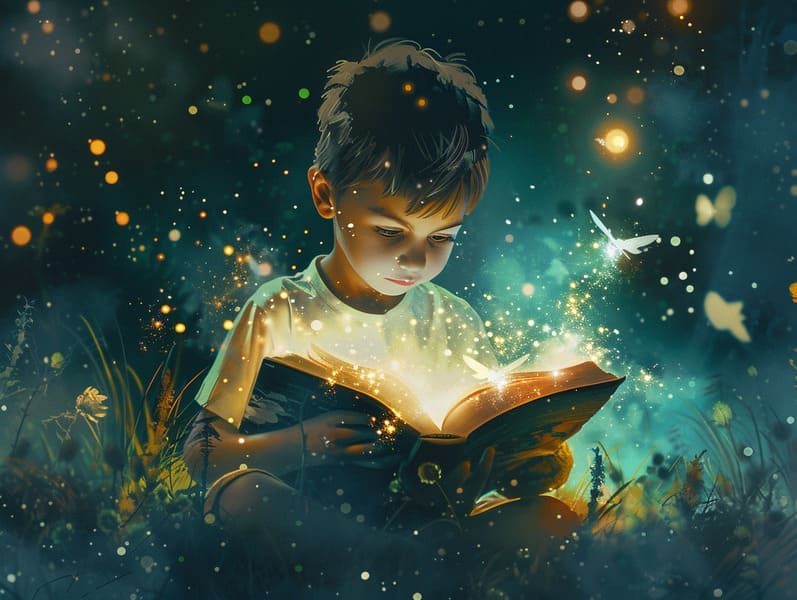The Formation of Fairy Tales for Kids with Its Persistent Grace.
The Formation of Fairy Tales for Kids with Its Persistent Grace.
Blog Article

Popular fairy tales have deep roots. These stories have been narrated from one generation to the next centuries before they were ever transcribed. They originated from a variety of backgrounds, including European traditions. They were initially shared among older generations, often carrying themes and messages pertaining to the societal norms and beliefs of the time.
The renowned Brothers Grimm, Jacob and Wilhelm, were among the first to gather many of these beloved tales. Their compilation, "Grimm's Children's Stories," included tales like "The Story of Cinderella," "The Story of Hansel and Gretel," and "Snow White," which have since become classics in the world of traditional fairy tales. Similarly, Andersen's imaginative stories, such as "The Little Mermaid," and "The Duckling's Story," have stolen hearts worldwide, solidifying their place in the pantheon of iconic fairy tales.
Though they are centuries old, fairy tales remain as applicable as ever, especially as nighttime stories for kids. These whimsical stories are now available in diverse formats, including beautifully illustrated books, enchanting animations, and online storybooks.
Their continued relevance can be ascribed to several whimsical characteristics:
Vital Lessons: Ancient fairy tales often whisper important moral lessons. Tales like "The Wolf and the Liar" teach the importance of truth, while "The Story of the Tortoise and the Hare" illustrate the merits of perseverance and meekness. These tales offer kids clear distinctions between right and wrong, shaping their moral compass in a gentle yet deep way.
Compassion and Insight: Timeless fairy tales frequently present personalities facing problems and hurdles, prompting kids to connect with their struggles and boost their triumphs. For instance, "Beauty and the Beast" shows us the virtue of appreciating inner worth to comprehend the inner spirit of a being, developing compassion and perception.
Cultural Comprehension: Many fairy tales are rich in the cultural contexts from which they arose. Engaging with these fairy tales can provide fascinating glimpses into different customs, enhancing a sense of cultural understanding and comprehension.
Imagination and Creativity: The mythical elements in classic fairy tales—talking beasts—awaken children’s creative dreams. These stories bring readers to imaginary realms, kindling innovative thinking and a sense of excitement that persists a lifetime.
Old fairy tales are not only fantastical but also pedagogical. They function as fantastical tools in nurturing various mental and emotional abilities in little ones. When old fairy tales are narrated, they nurture speech development by bringing new word meanings and detailed sentence structures. This practice also boosts auditory perception and attentiveness, as little ones remain attentive, keen to see what happens next.
Furthermore, examining the themes and characters of ancient fairy tales can develop critical thinking and reasoning skills. Children are educated to see patterns, make predictions, and grasp cause and effect. These discussions also promote children reveal their thoughts and feelings, adding to their emotional intelligence.
In today’s digital era, the existence of internet fairy tales has made these fairy tales more within reach than ever. Internet sites and digital apps make available comprehensive collections of famous fairy tales that can be experienced or heard anytime, anywhere. Fairy tales told out loud are particularly favored, offering an captivating way for little ones to delight in these delightful tales. Read-aloud stories and read-out-loud videos lead characters and settings to life, often enhanced by fantastical soundtracks and musical scores that improve the narrative adventure.
The lasting allure of timeless fairy tales lies in their ability to shift to current eras while maintaining their essential themes. Contemporary updates of these fairy tales often present more inclusive characters and modern settings, making them meaningful to today’s audience. However, the central morals of spirit, generosity, and fair play remain unchanged, continuing to appeal to children of all ages.
Timeless fairy tales also offer a sense of serenity and recognition. They deliver up a ordered narrative with a unmistakable beginning, middle, and end, often wrapping up with popular fairy tales with morals the ending of conflicts and the triumph of right over wrong. This consistency can be reassuring for children, gifting a sense of steadfastness in an unstable world.
Traditional fairy tales continue to allure and teach new generations, maintaining their captivation and significance in modern society. As bedtime stories for kids, they make available a perfect blend of charm and enlightenment, aiding moral values, empathy, and creativity. The abundance of digital storybooks and the sought after status of fairy tales narrated assure that these old fairy tales remain reachable to new generations.
By protecting and distributing these narratives, we continue to honor the rich tapestry of inventiveness and cultural heritage. Whether you are exploring a gorgeously illustrated book, accessing a virtual collection, or hearing an sound book, the allure of popular fairy tales is always within reach. These stories demonstrate of the unfading essence of fairy tales and its ability to link us across eras and regions.
Regardless if you are discovering a vividly illustrated book, browsing a internet collection, or listening via an read-aloud book, the captivation of famous fairy tales is always within reach.
These narratives highlight of the continued influence of storytelling and its ability to link us across generations and cultures, casting a charm that delights and instructs alike.